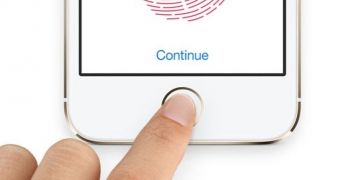Posted on April 22 with the main purpose of improving Touch ID fingerprint recognition, iOS 7.1.1 has apparently done a great job. A person with knowledge of the sensor’s inner workings now explains how all this was possible and why the sensor’s readings were much less accurate before iOS 7.1.1 was deployed.
iOS 7.1.1 is the newest software update deployed by Apple for iPhone, iPod touch, and iPad customers. High on the list of priorities with this update was to make improvements to Touch ID fingerprint recognition, but the Cupertino company also addressed issues with keyboard responsiveness. The update even fixed a problem when using Bluetooth keyboards with VoiceOver enabled.
Regarding the flagship feature of the update (the Touch ID bit), Redditor iOSecure had the following things to say about the technologies involved and how the sensor was actually not very well prepared to handle some situations.
“Touch ID takes a 88x88 500ppi scan of your finger and temporarily sends that data to a secure cache located near the RAM, after the data is vectorized and forwarded to the secure enclave located on the top left of the A7 near the M7 processor it is immediately discarded after processing,” he explains.
“The fingerprint scanner uses subdermal ridge flows (inner layer of skin) to prevent loss of accuracy if you were to have micro cuts or debris on your finger,” adds iOSecure.
Previously, iOS 7 would instruct the sensor to take a single scan of each position, leading to potentially erroneous behavior that could be interpreted as a decaying ability to interpret fingerprints. iOS 7.1.1 fixes all that with a smart tweak and some new algorithms.
“With iOS 7.1.1 Apple now takes multiple scans of each position you place finger at setup instead of a single one and uses algorithms to predict potential errors that could arise in the future,” iOSecure continues.
He explains that, while Touch ID was initially designed to gradually improve its own accuracy over time, “the problem was if you didn't scan well on setup it would ruin your experience until you re-setup your finger.”
“iOS 7.1.1 not only removes that problem and increases accuracy but also greatly reduces the calculations your iPhone 5S had to make while unlocking the device which means you should get a much faster unlock time,” iOSecure concludes.
The Redditor also speculates that Apple will most likely incorporate the Touch ID sensor in the iPhone’s display in the future.

 14 DAY TRIAL //
14 DAY TRIAL //